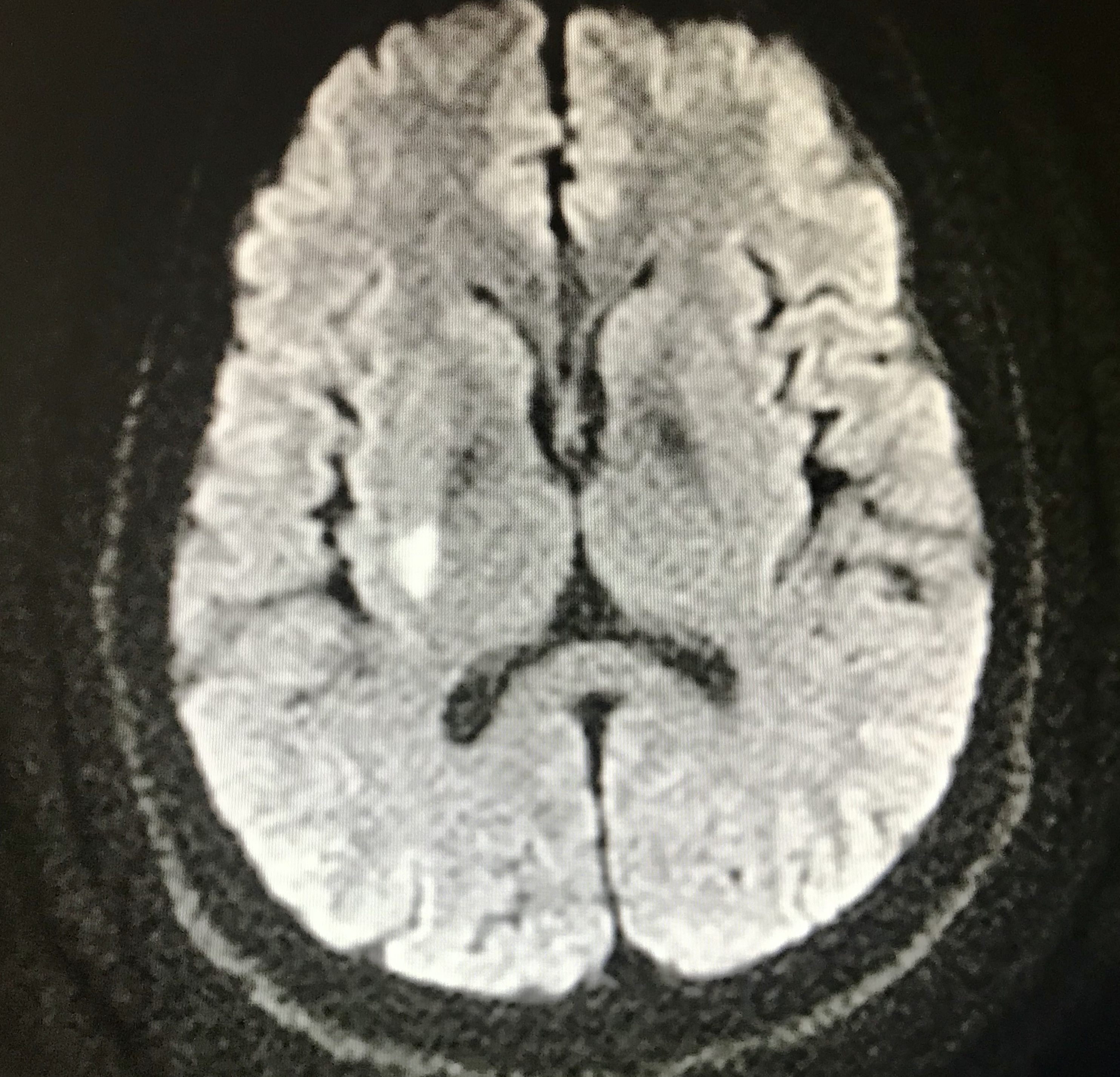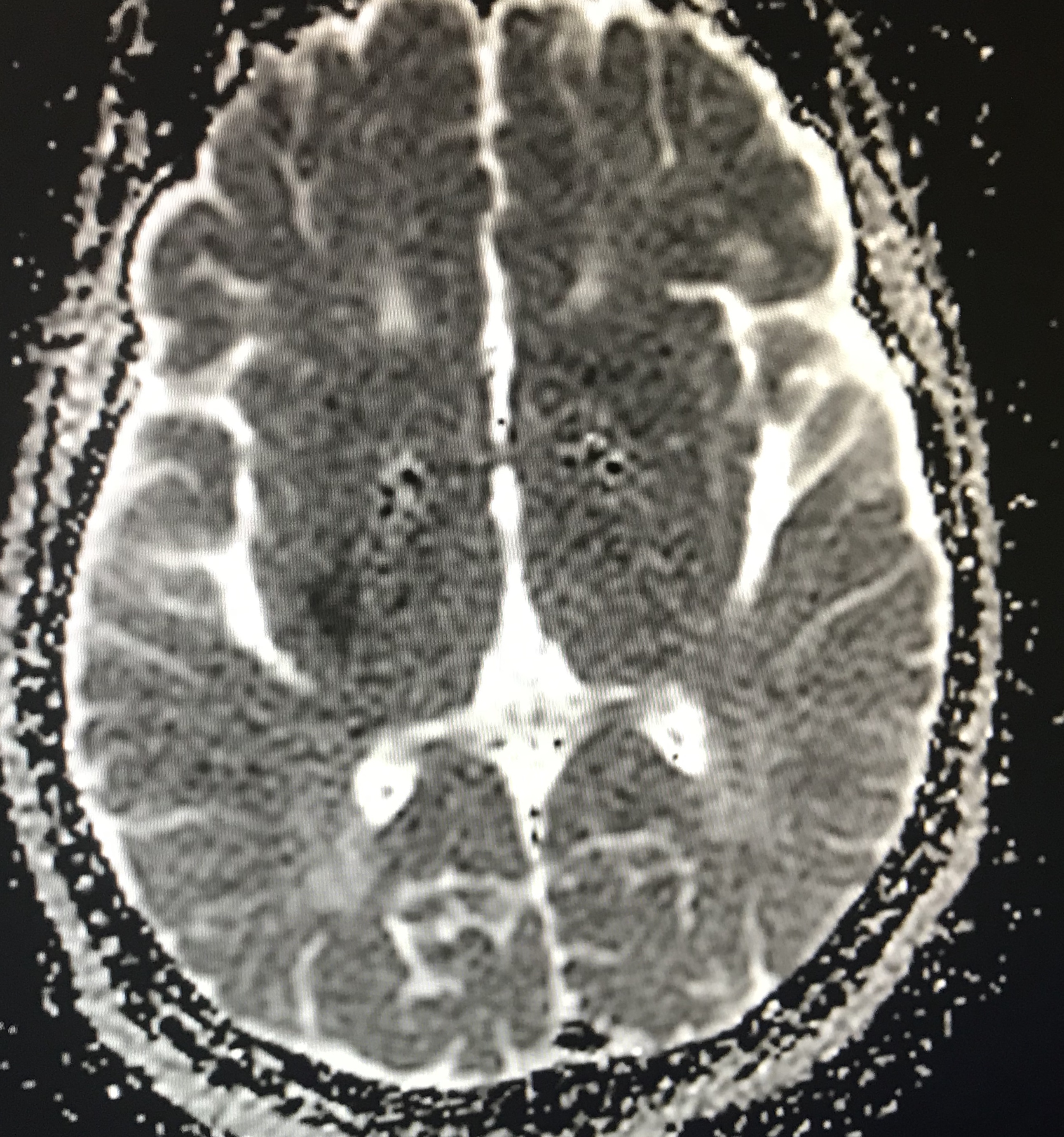Category: Choreas (Non-Huntington's Disease)
Objective: To discuss a unique movement disorder as a complication of ischemic stroke involving the lenticular nucleus and its pharmacological management
Background: Movement disorders after a stroke can varies from hypokinetic to hyperkinetic . Among hyperkinetic disorders lower amplitude chorea accompanied by athetosis is an uncommon presentation. In this case report we discussed choreoathetoid movement after ischemic stroke and its management with Levetiracetam
Method: NA
Results: Case report: 60 year African American male with past medical history of hypertension, hyperlipidemia, tobacco and cocaine abuse presented to emergency room with 1 day history of left sided weakness and numbness along with left facial droop. On presentation patient had Temperature of 36.3 degree Fahrenheit, Blood pressure of 165/94, Pulse 89 and respiratory rate of 20 per minute. On examination National institute of health stroke scale of 5 was given ( 1 for left facial droop, 1 for left arm drift, 1 for left leg drift and 1 for language). Patient was outside of tissue plasminogen activator window. Computerized tomography ( CT) of head showed lacunar hypodensity in the right Lenticular nucleus. CT angiogram of head and neck showed no evidence of hemodynamically significant stenosis involving the cervical and proximal cerebral arteries. MRI showed lacunar infarct in the right Lenticular nucleus . Patient was started on Dual antiplatelets (Point Trial) and statin for secondary stroke prevention. On second day post stroke patient started to have choreoathetoid movements involving the lips and left arm and hand. Patient was started on levetiracetam 500 mg twice a day with complete resolution of choreoathetoid movements at the time of discharge.
Conclusion: Chorea along with athetosis is a unique and rare complication of stroke involving subthalamic nucleus, caudate nucleus, putamen and thalamus. Chorea is characterized by irregular, purposeful, jerky, rapid, brief and unstained movements which can involve whole body or one side of body with preference for distal body parts. Lesion of subthalamic nucleus causes reduction in Globus pallidus inhibitory output in Thalamus which in return results in excitation of cortex with resultant hyperkinetic movement disorders. Levetiracetam has been reported to resolve the vascular chorea via inhibition of calcium release from intraneuronal stores and was helpful in resolving the chorea in our case.
To cite this abstract in AMA style:
A. Deep, B. Krishnaiah, M. Ishfaq, O. Saeed, S. Shah, S. Singh, A. Alexandrov. Choreoathetosis post lentiform nucleus ischemic Stroke: A unique pathology and presentation [abstract]. Mov Disord. 2020; 35 (suppl 1). https://www.mdsabstracts.org/abstract/choreoathetosis-post-lentiform-nucleus-ischemic-stroke-a-unique-pathology-and-presentation/. Accessed April 19, 2025.« Back to MDS Virtual Congress 2020
MDS Abstracts - https://www.mdsabstracts.org/abstract/choreoathetosis-post-lentiform-nucleus-ischemic-stroke-a-unique-pathology-and-presentation/


